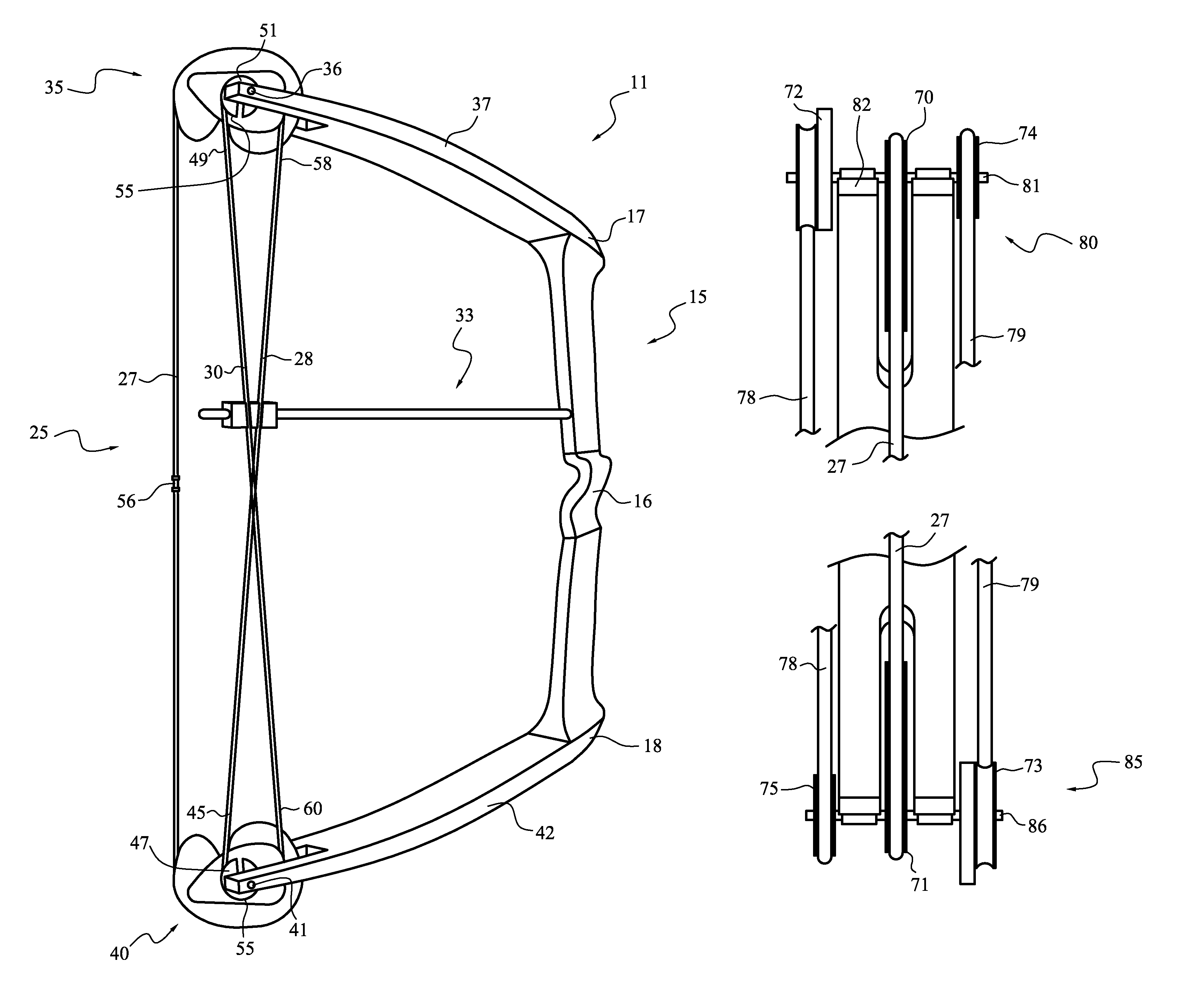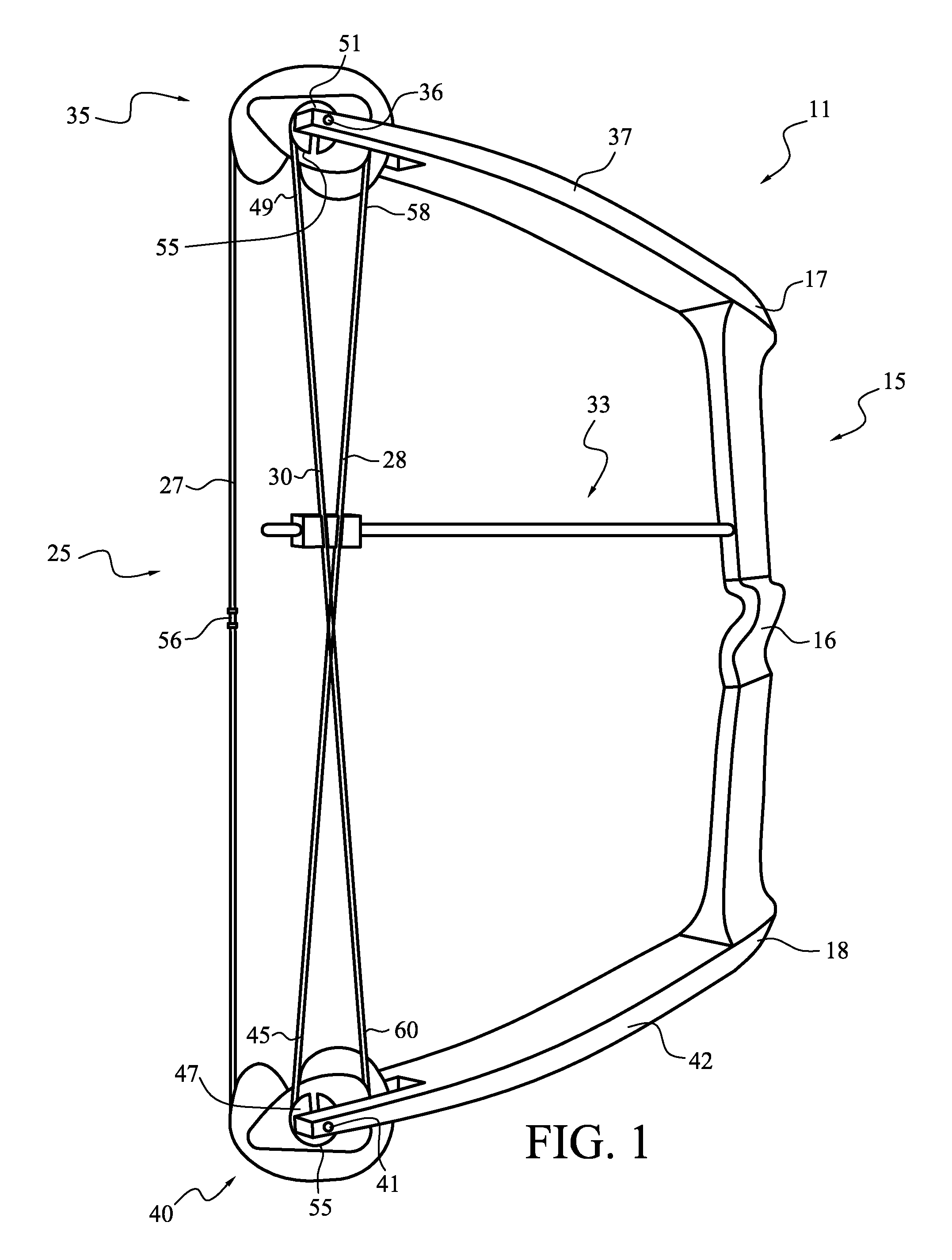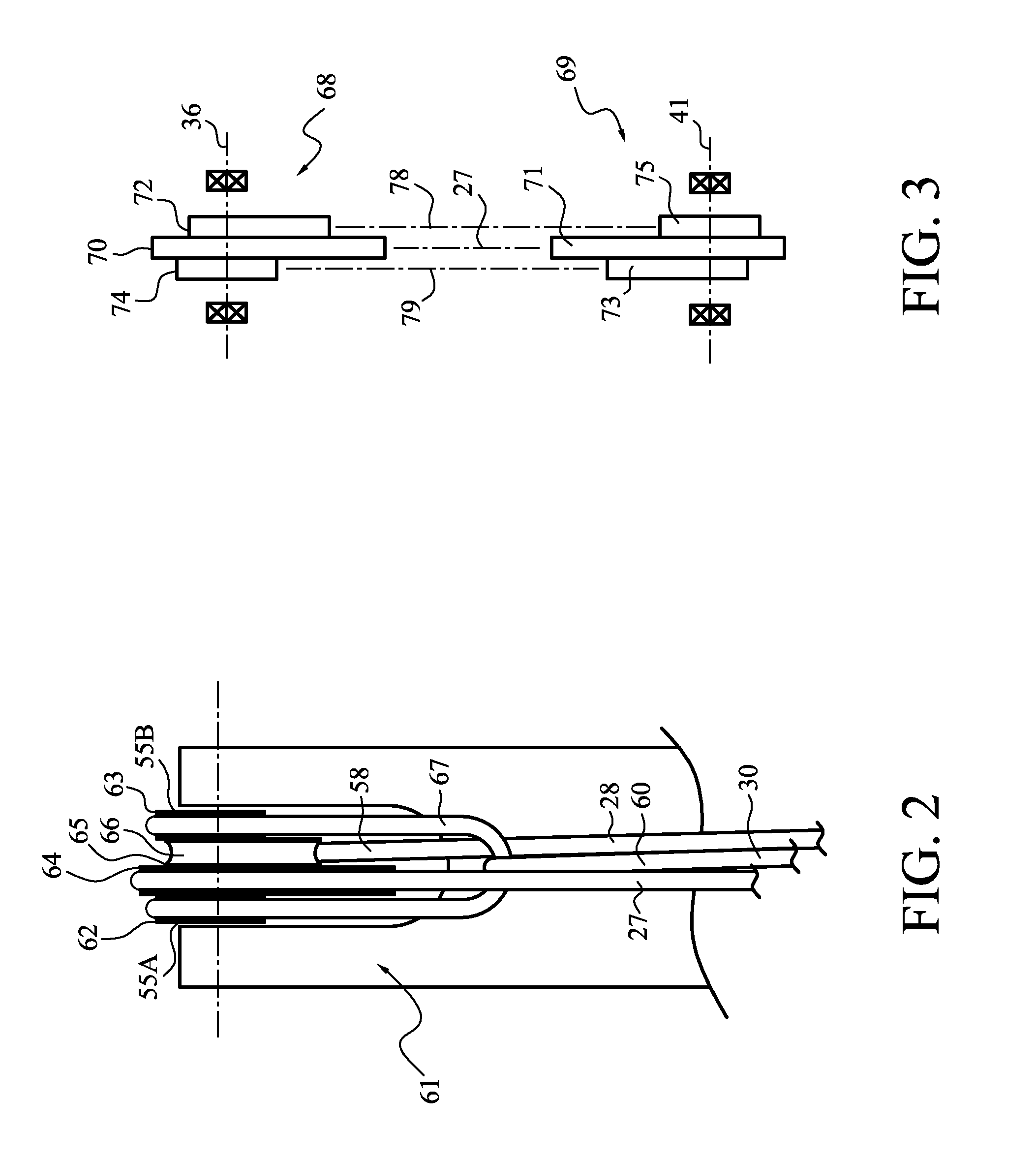Synchronized compound archery bow
a compound archery and bow technology, applied in the field of compound archery bows, can solve the problems of insufficient force application to the opposite side of the mounting axle of the pulley assembly, time-consuming and technical adjustment of the rigging, and the effort to re-tune the bow requires rigging adjustments and adjustments, and achieves the effect of evenly discharging the cable tension for
- Summary
- Abstract
- Description
- Claims
- Application Information
AI Technical Summary
Benefits of technology
Problems solved by technology
Method used
Image
Examples
Embodiment Construction
)
[0027]The compound bow, generally 11, illustrated by FIG. 1, is of generally conventional construction. It includes a handle riser component, generally 15, with a grip 16, an upper end 17 and a lower end 18. The rigging, generally 25, includes a bowstring 27, and two synchronizing cables 28, 30. The cables 28, 30 are held away from the operating plane of the bowstring 27 by a cable guard assembly, generally 33. An upper pulley assembly, generally 35, is mounted on a pivot axle 36 at the tip of an upper limb 37. A lower pulley assembly, generally 40 is similarly mounted on a pivot axle 41 at the tip of a lower limb 42. The rigging of pulley assembly 35 is arranged generally conventionally, except that the synchronizing end 45 of the cable 28 is coupled to the pulley assembly 40 through a synchronizing anchor component 47. Similarly, the synchronizing end 49 of the cable 30 is coupled to the pulley assembly 35 through a synchronizing anchor component 51. This “cross coupling” configu...
PUM
 Login to View More
Login to View More Abstract
Description
Claims
Application Information
 Login to View More
Login to View More - R&D
- Intellectual Property
- Life Sciences
- Materials
- Tech Scout
- Unparalleled Data Quality
- Higher Quality Content
- 60% Fewer Hallucinations
Browse by: Latest US Patents, China's latest patents, Technical Efficacy Thesaurus, Application Domain, Technology Topic, Popular Technical Reports.
© 2025 PatSnap. All rights reserved.Legal|Privacy policy|Modern Slavery Act Transparency Statement|Sitemap|About US| Contact US: help@patsnap.com



